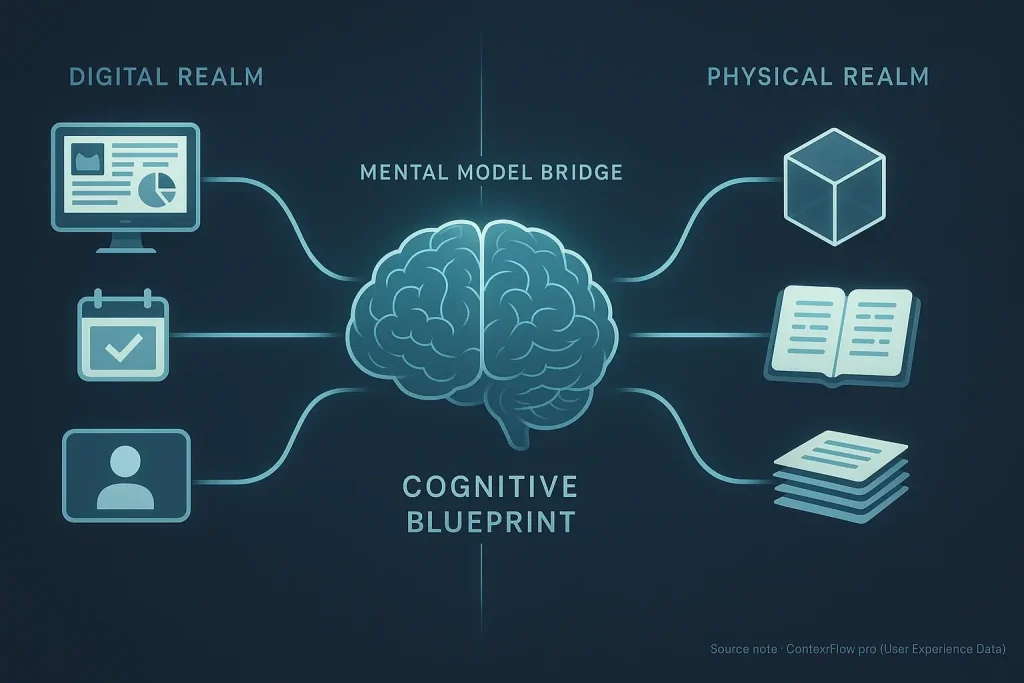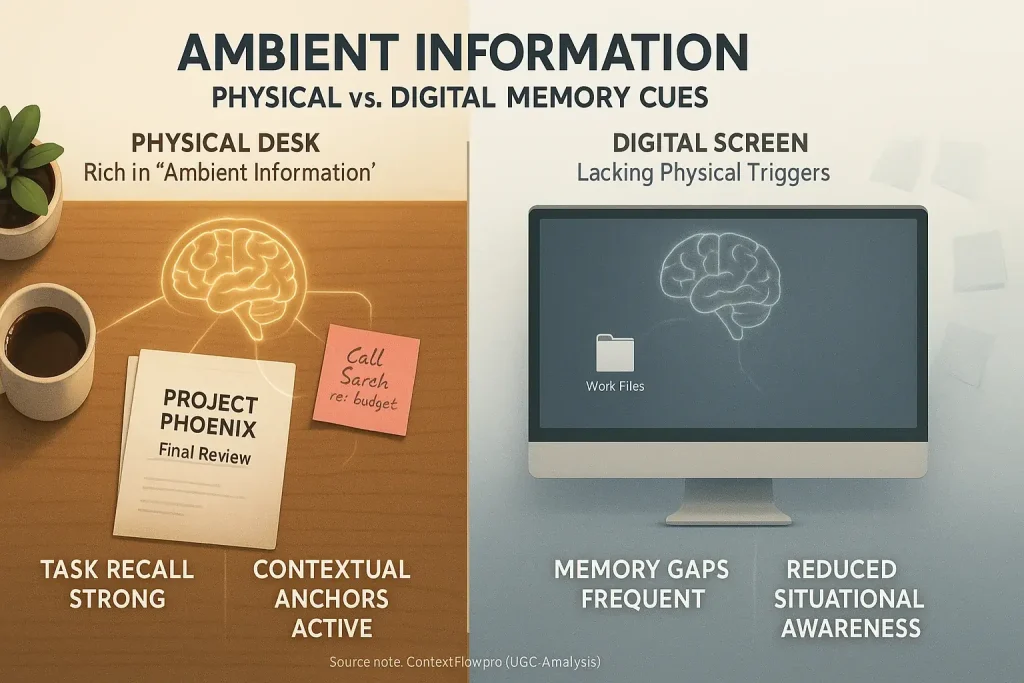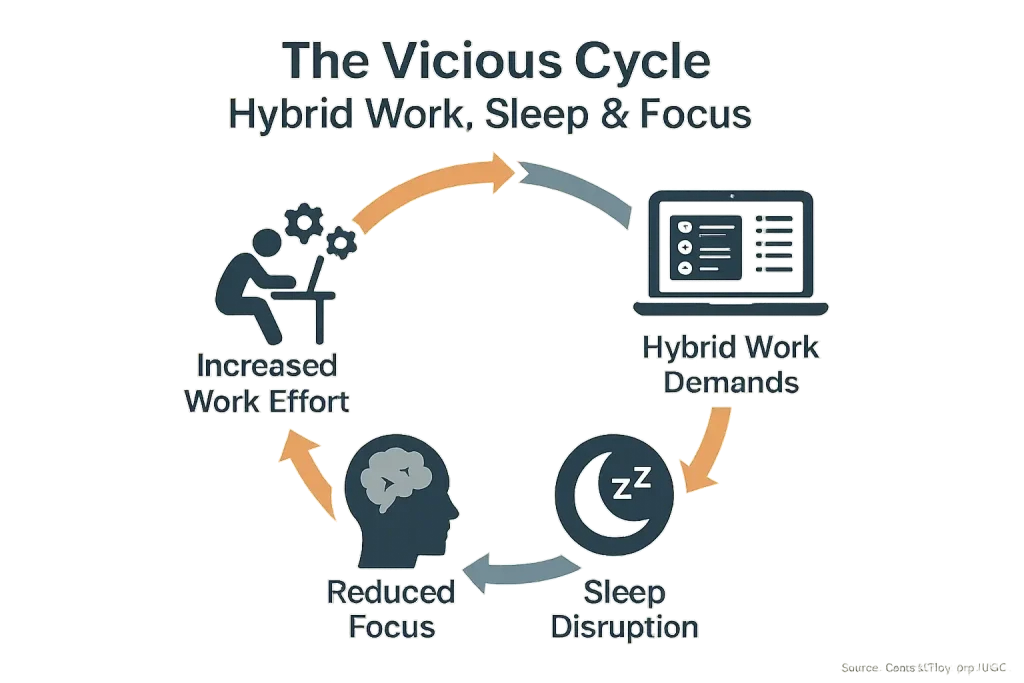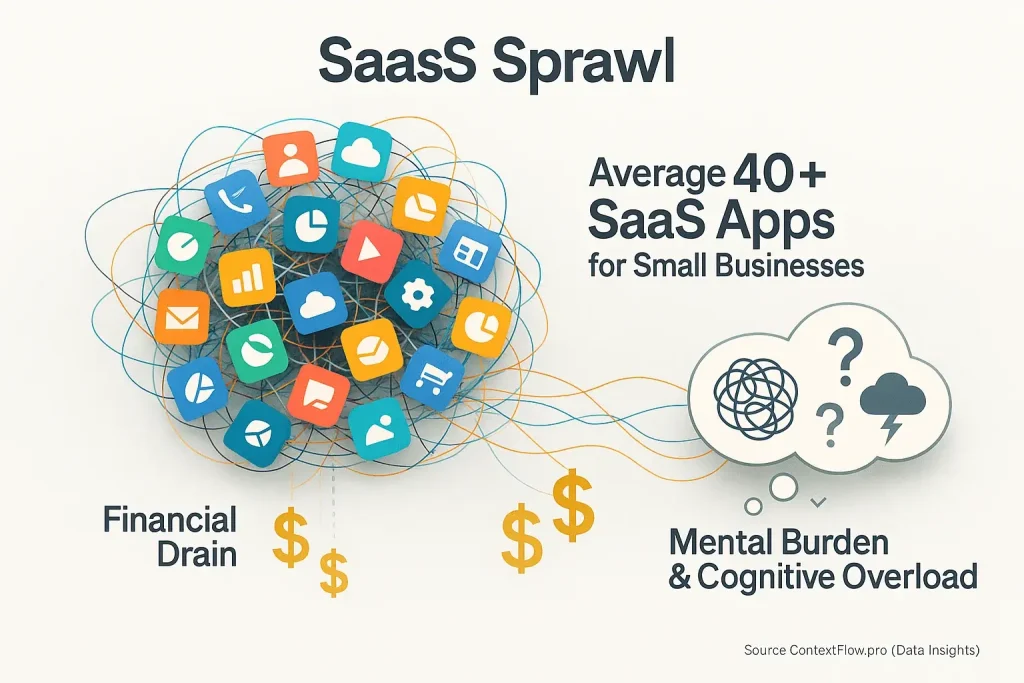The 'One-Size-Fits-All' Hybrid Policy: A Myth Debunked by Real Users
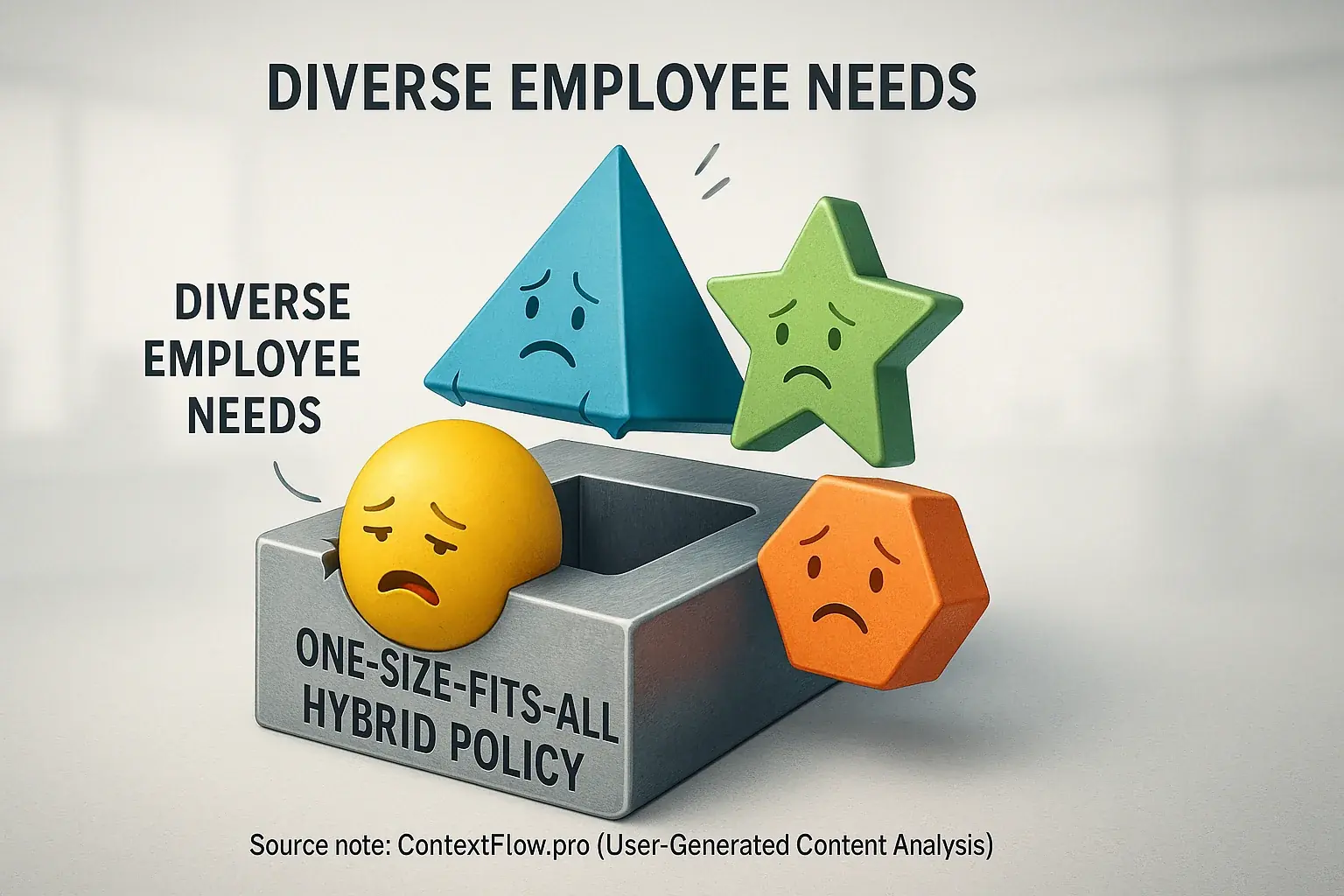
Many believe a single hybrid policy simplifies operations. This is a myth. Ever tried a 'one-size-fits-all' hat that clearly did not fit? That is precisely how numerous hybrid workers describe rigid company directives. Simplicity sounds appealing. User experiences, however, paint a vastly different reality, revealing widespread dissatisfaction.
Our research into user-generated content uncovers a core truth. Individual needs are incredibly diverse. What empowers one employee often hinders another. Consider a parent needing specific flexibility for school pickups, while a focused developer craves uninterrupted office time. A single, unyielding policy frequently leaves both professionals frustrated and unsupported.
Personalization is not a luxury. It is a fundamental necessity for effective hybrid work. This analysis will detail why, backed by countless user accounts of policy failures. Professionals demand more adaptable, individualized solutions. Our conclusions stem from meticulous study of real-world experiences, not theoretical models.
Why Rigid Policies Collapse: User Perspectives on Diverse Needs
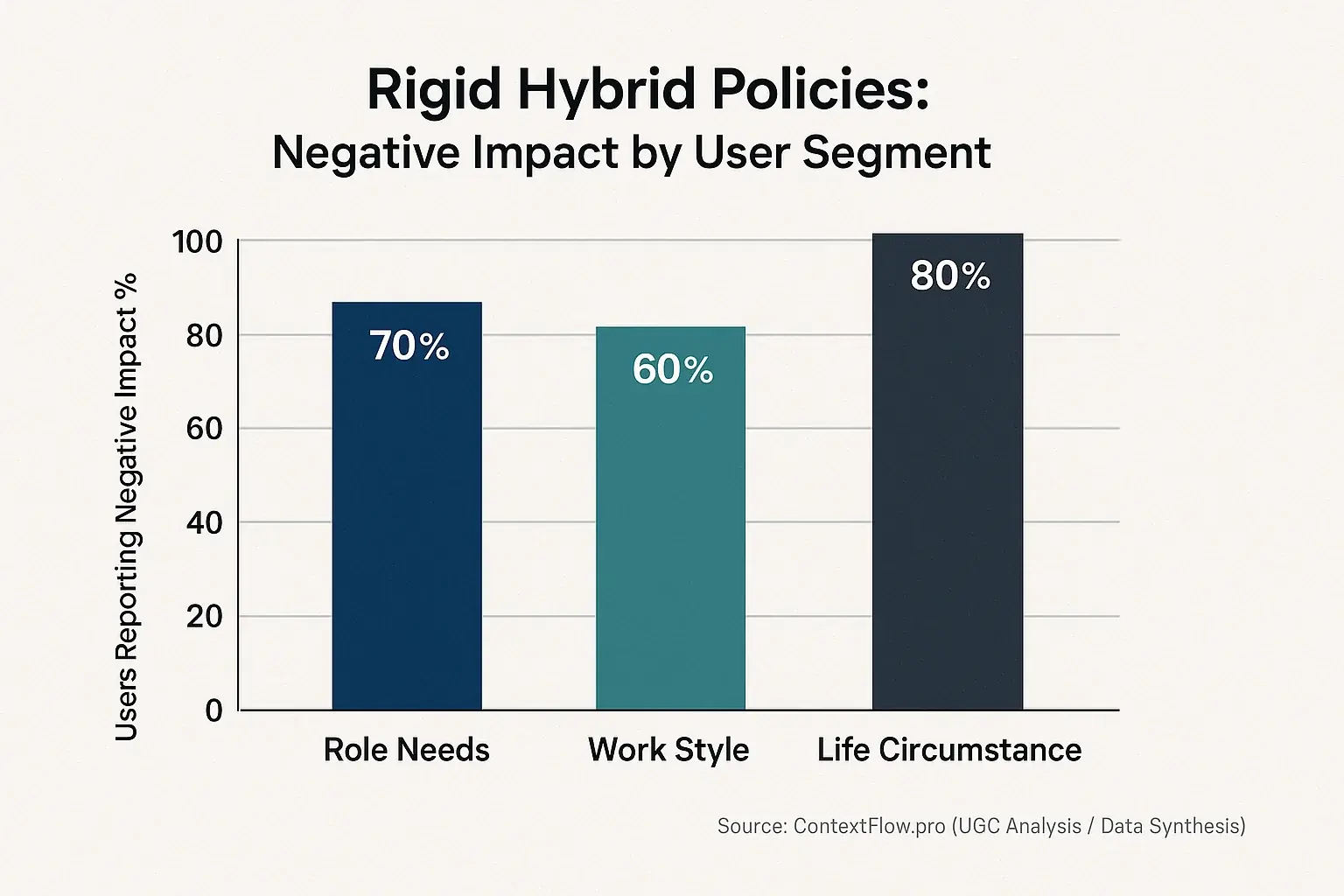
Inflexible hybrid policies often crumble. They ignore a fundamental truth. No two hybrid workers are identical. Diverse roles demand distinct setups. A sales representative might thrive with in-office collaboration. A software engineer often requires deep, uninterrupted home office time for coding. Forcing both into the same "three days in-office" mandate frequently creates user frustration. Productivity rarely improves under such rigid constraints; our user experience analysis confirms this.
Individual work styles present another significant hurdle. Standardized rules frequently clash with these personal rhythms. Some professionals perform optimally in the early morning. Others are true night owls. Quiet environments suit many focused tasks. Some individuals, however, concentrate better with ambient sound. ContextFlow.pro's research into user-generated content reveals a clear pattern. Policies conflicting with natural work cadences diminish output. Users report feeling forced into suboptimal schedules. This mismatch often leads to burnout. Resentment can also build significantly.
Life circumstances critically shape hybrid work needs. Corporate calendars seldom accommodate personal realities. Parents frequently require scheduling agility. Caregivers face unpredictable demands on their time. Individuals managing health conditions need adaptable work arrangements. Fixed policies simply cannot offer this necessary leeway. Professionals often share stories of immense stress stemming from inflexible rules. These rigid structures sometimes force agonizing choices between work duties and essential personal responsibilities.
These consistently ignored factors lead to an inevitable policy collapse. Users, facing unworkable directives, either find ways to bypass the rules or their productivity plummets. Professionals report feeling unheard. Their specific, valid situations are disregarded by generic mandates. The policy itself then transforms into the primary source of daily friction. This narrative of systemic failure echoes throughout countless user accounts we've analyzed.
Build Your Ideal Hybrid Policy: A Personalized Approach (Interactive Quiz)

Build Your Ideal Hybrid Policy: A Personalized Approach
Your Recommended Policy Style:
Practical Tips for Your Flow:
Your quiz responses generate a personalized hybrid policy profile. This profile highlights your key preferences. Understanding these preferences is the first step. It empowers you to articulate your ideal work structure.
This tool assesses your current inclinations for hybrid work. It considers your specific role. Your preferred work style also influences results. Life circumstances significantly impact optimal arrangements. ContextFlow.pro analysis of user experiences shows these factors are paramount. This self-assessment clarifies your unique requirements for effective hybrid performance.
Consider these results a valuable starting point. They are not a rigid prescription. Use this information to initiate meaningful discussions with your manager or team. Advocating effectively for your needs begins with clear self-awareness. This quiz helps build that foundation for a better hybrid future.
This is relevant to our discussion on: home office focus
Beyond the Quiz: Key Elements of a Personalized Hybrid Framework
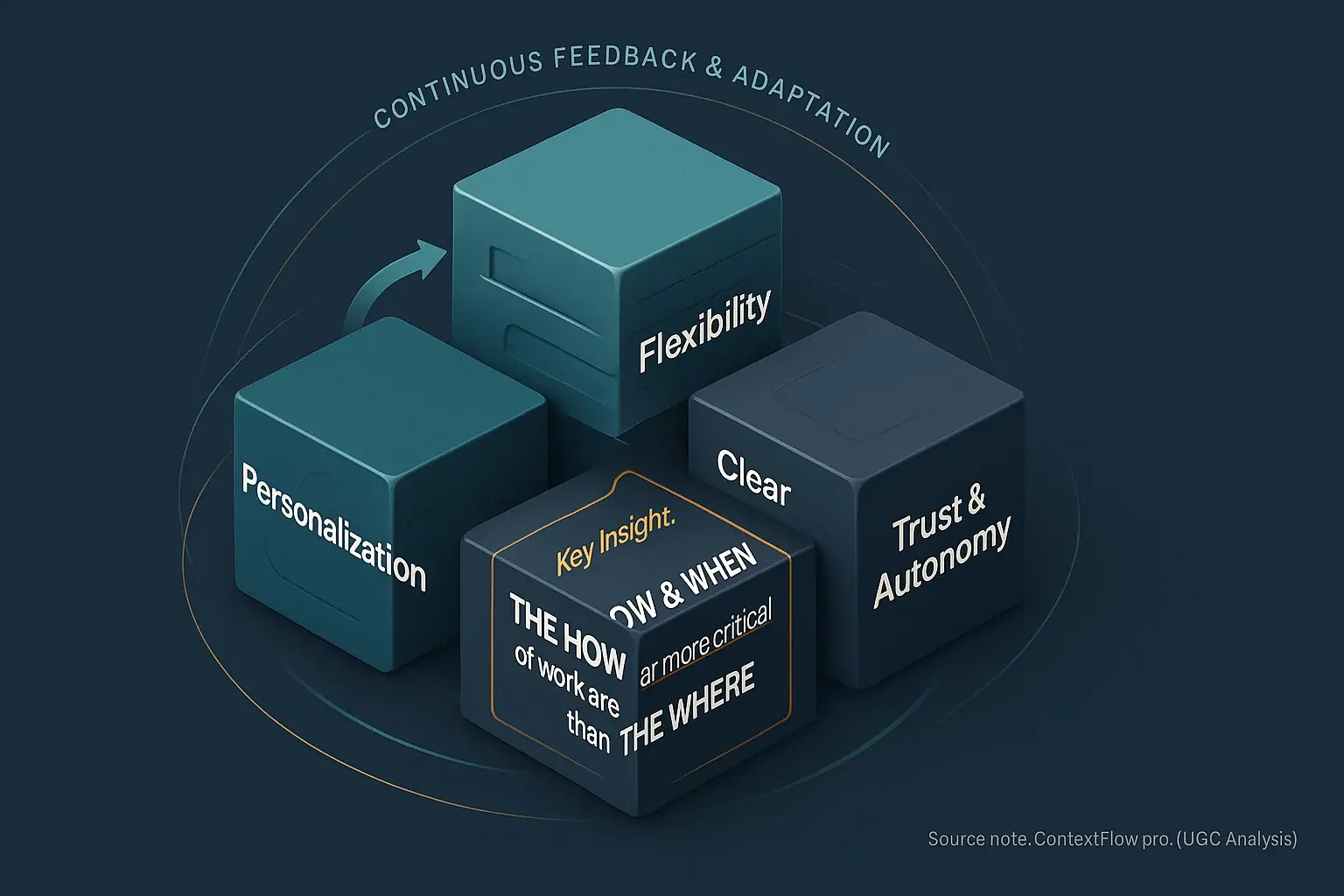
Identifying an ideal policy is just the start. The real challenge? Implementation. A personalized framework supports this journey. This approach avoids chaos. It creates clear guardrails. These guardrails enable individual flow within a cohesive team structure, fostering both autonomy and alignment.
Clear expectations form a key element. Users consistently highlight this crucial point. Ambiguity kills productivity. Flexibility thrives when everyone understands what is expected. Team members must know where deliverables are due. They also need clarity on when tasks are due. Without it, chaos often ensues; many user stories confirm this reality. Many companies focus intently on where people perform their work. Yet, our UGC analysis reveals users consistently emphasize the how and when are far more critical. These factors directly impact their personal productivity and overall wellbeing. An effective policy clearly defines desired outcomes; it does not merely dictate work locations.
Trust and autonomy are foundational pillars. Our UGC analysis shows a distinct pattern here. Micromanagement in hybrid settings frequently leads to rapid employee burnout. Users flourish. They thrive when leadership trusts them to manage their own time effectively. This trust must extend to their choice of work location. This autonomy functions best when individuals consistently deliver expected results, reinforcing a culture of accountability.
Continuous feedback loops are vital. Adaptation mechanisms are also crucial. No policy achieves perfection from its initial launch. The most effective hybrid frameworks evolve dynamically. They are shaped by ongoing, direct user feedback. Changing business needs and team requirements also drive their refinement, ensuring long-term relevance and success.
The Human Element: Why Personalization Isn't Just 'Nice to Have'

Rigid hybrid policies impact people profoundly. Beyond productivity metrics, these impersonal approaches take a toll. Our analysis of user experiences consistently reveals increased stress. Professionals report feeling undervalued, their unique circumstances often dismissed, leading to burnout.
Personalization fosters vital psychological safety. Companies build real trust by acknowledging individual employee needs. Our research into UGC shows users feel seen, heard, and genuinely respected. This recognition directly translates into higher engagement and strengthens employee loyalty, an unspoken truth frequently missed by detached policy creation.
True hybrid success hinges on prioritizing this human element. Effective strategies empower individuals, not merely enforce rules. Companies that actively listen to their employees' diverse situations thrive. They adapt. This focus on people ultimately builds the most resilient and productive hybrid environments.
Embracing Flexibility: The Path to True Hybrid Success
Rigid policies are outdated. True hybrid success flourishes within adaptable frameworks. Our user experience analysis consistently reveals this core truth. Flexibility is not chaos. It is the very foundation for teams and individuals to genuinely thrive.
Advocate for change. Design policy. Your core action? Listen. Listen to the people. Embrace personalization. That unlocks genuine productivity. It builds wellbeing. It creates a truly effective hybrid future.
Related Insight: Myth: Traditional Performance Metrics Work Fine for Hybrid. User-Adapted KPIs: What Really Measures Success
Traditional performance metrics often misjudge hybrid work realities. Many workers value autonomy; they seek measures reflecting genuine contributions, not just activity logs. Outcomes define their success.
Advocating for better metrics is vital for these individuals. User-adapted Key Performance Indicators (KPIs) can truly reflect hybrid achievements. Exploring these tailored KPIs reveals what genuinely measures success, moving beyond outdated models.

